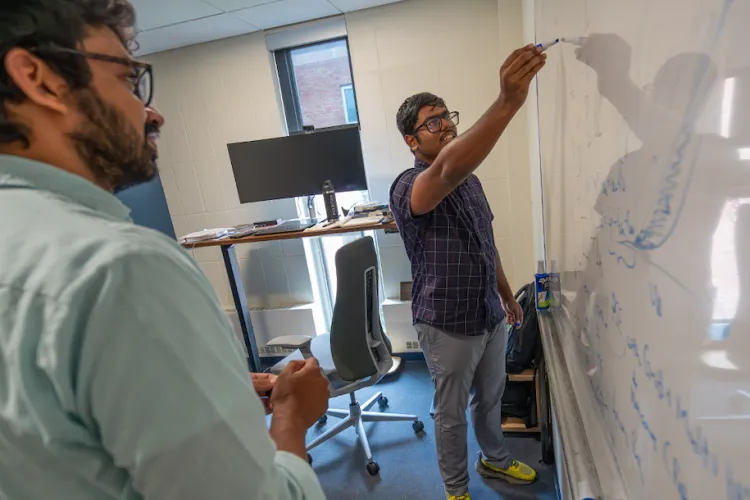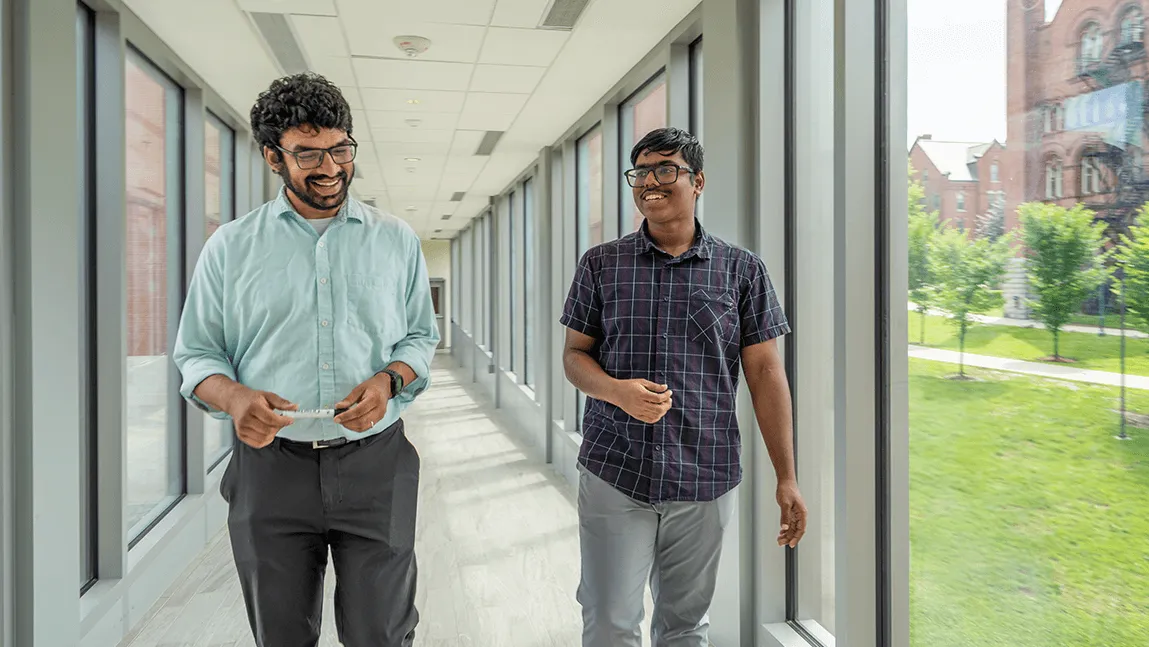Santhosh Balasubramanian is only a sophomore in college but over two decades he’s seen the climate change in his home city of Chennai, India. “The rains used to be more periodic and better,” he says, while he looks at a whiteboard full of equations in the office of UVM Assistant Professor of Engineering Amrit Pandey, “but nowadays the raining pattern and the seasonal changes are more erratic.”
He arrived in Vermont in June, his first trip to the United States, as one of the inaugural students in a new international exchange program between UVM and the Indian Institute of Technology, Madras (IIT Madras), often regarded as the best technical university in India. “It’s great here,” he says, “It’s very different than where I grew up. I expected skyscrapers and was surprised by the landscape and nice old buildings.”
But one way he notices that India and Vermont are the same: “I have experienced heat waves both in Chennai and here,” he says, “over the years climate change has made rain and heat very unpredictable everywhere.”
Which is why he’s working with Prof. Pandey this summer to find ways to make the electric grid more predictable—as more solar, wind, and other carbon-free energy sources are added to the mix. “I'm attempting to model solar cells,” he says, as a part of Pandey’s larger research program to better understand how electrical grids will react to changes.
“The way we consume and transport and generate electricity is changing rapidly and that requires us to better understand the system as we change it,” says Pandey, an assistant professor of electrical and computer engineering in UVM’s College of Engineering and Mathematical Sciences. But changing the actual grid—the generating stations, transmission lines, transformers, etc.—“costs millions of dollars,” he says. “It’s not possible to do that and then see if it’s going to work or not.” That’s why he and his colleagues and graduate students—and, for this summer, Santhosh Balasubramanian—build sophisticated computer models to see how changes and disturbances might affect the whole system.
“If we were to have a hurricane in the Gulf and Texas and we were to lose a few assets, would the grid operate as expected?” Pandey asks. “And in New England, if we have a huge snowstorm, how is that likely to change the modern grid?”
And a similar question is true about renewable energy sources. “How do we integrate them in the best ways?” asks Santhosh, a chemical engineering major at IIT Madras, “the better we can do this in the long run will help use more green energy. And that will help reduce global warming.”

UVM Family
The new exchange program was spearheaded by UVM President Suresh Garimella who connected with leaders at IIT Madras (where he completed his own undergraduate work in mechanical engineering in 1985). “International science is very important, and collaboration is important, and that comes across in many streams, not just at the faculty level,” says Jamie McGowan, UVM’s Executive Director of International Partnerships and Programs. “An alternative view or way of doing things enhances science fundamentally.”
For example, “it’s really helpful for the interns to observe our senior PhD students to see, ‘hey, this is what research is’; it’s very different, perhaps, from curriculum-based programs,” says Professor Pandey. “And, on the other hand, it’s an opportunity for our students to interact with some of the top talents from India, see how they look at problems and their style of working.”
For his part, Santhosh Balasubramanian feels inspired by what—and where— he’s learning this summer. “After college, I would like to pursue a PhD and contribute more towards finding solutions with renewable energy,” he says. And he’s felt welcomed at UVM. “I feel like a part of the family," he says. “I never feel I'm away from home here. I went to Boston once, with its big buildings. So I have had both experiences and Vermont is better—more peaceful.”
